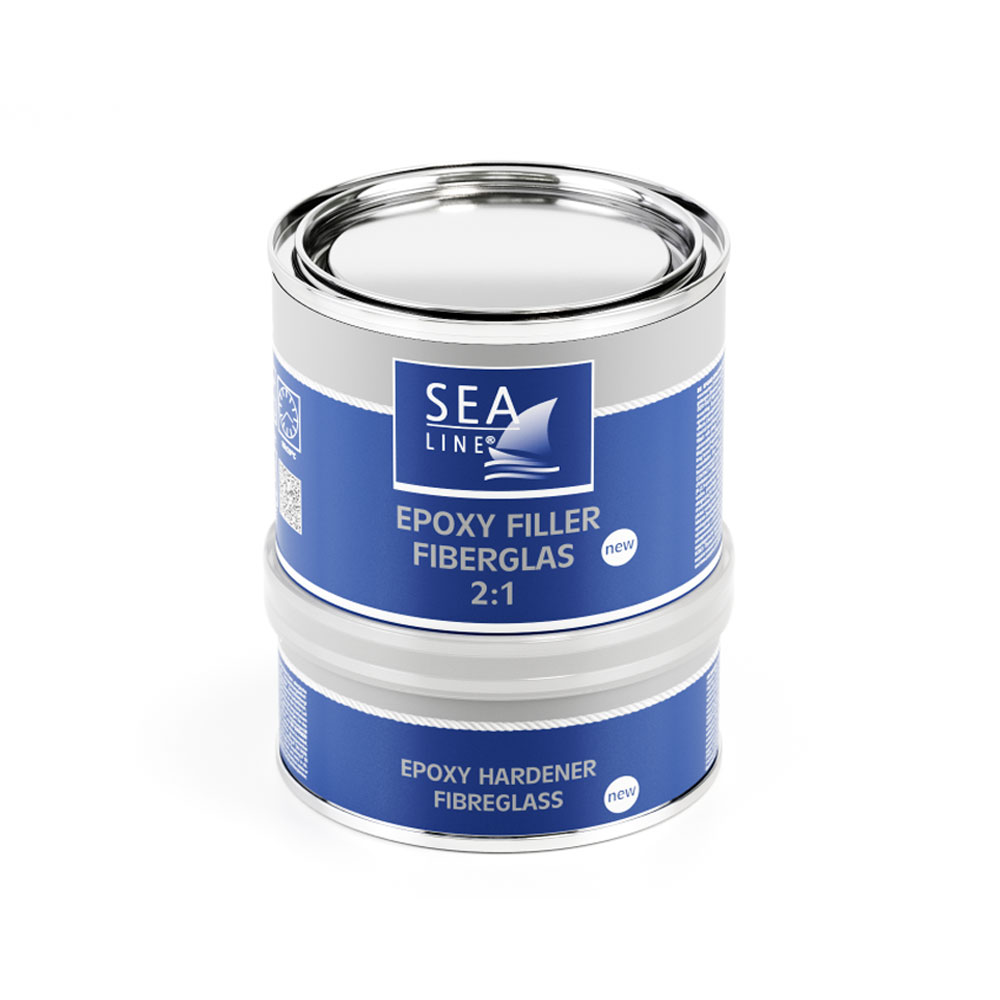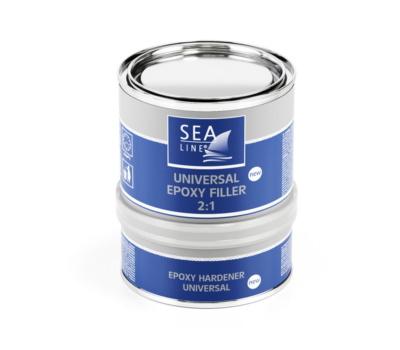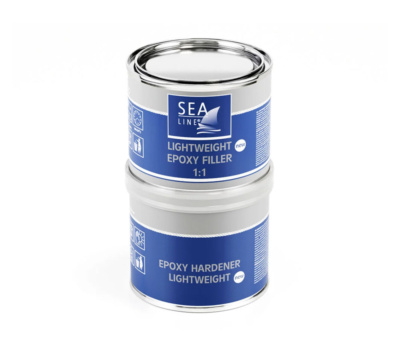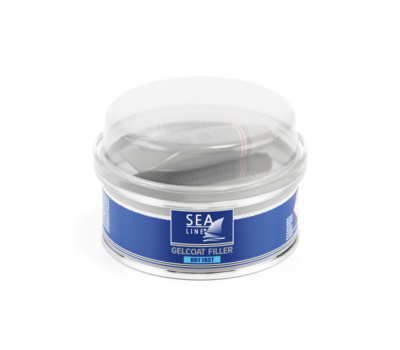Epoxy fillers, including fiberglass filler, are primarily the only fillers truly recommended for use both above and below the waterline.
They can certainly be applied to hull components constantly immersed in water as well. In short, they can be used on fiberglass, wood, steel, and aluminum.
| Weight | Code | |
|---|---|---|
| set (A+B) | 750 g | 12204 |
| component A | 5 kg | 12290 |
| component B (hardener) | 2,5 kg | 12291 |

| Type | GRP laminates, wood, steel, aluminum |
| Place | Above and below waterline |
| Function | Deep damages, gluing |
| Application | Putty knife |
| Color | light grey |

Epoxy fillers are primarily the only fillers recommended for use on hull components constantly immersed

Recommended for large areas due to low own weight

Gelcoat Filler is very fast hard and easy in use.
Yes, you can mix Sea-Line polyurethane paints. The only difference are the pigments of polyurethane paints that determine the color of the paint. But remember to keep the right proportions of base, hardener and thinner.
We recommend to always sand the surface between applying two different products to ensure uniform surface roughness and adhesion of subsequent layers. The sanded surface should also be cleaned and degreased.
Yes, you can paint the bottom of the boat with polyurethane paint due to its high mechanical strength. We recommend this solution when the boat is not launched for a long time and is not exposed to fouling.